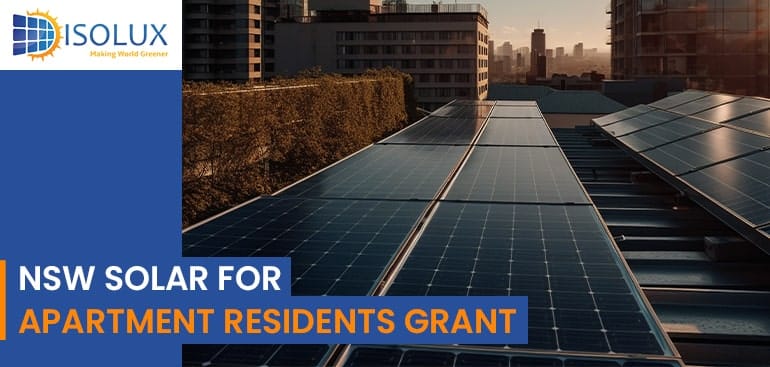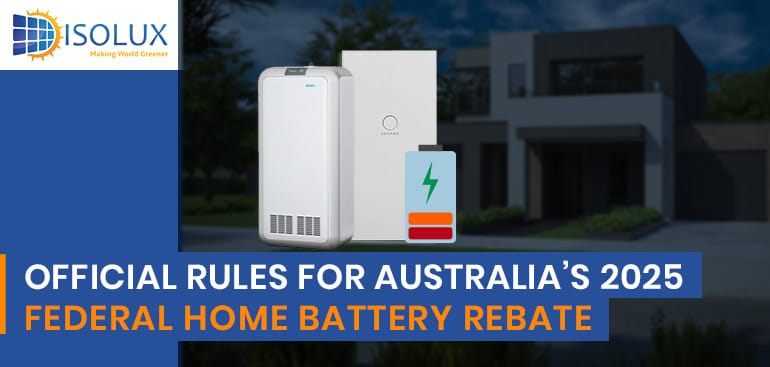Embarking on the solar journey in New South Wales (NSW) aligns with environmental consciousness and comes laden with substantial financial perks through government-backed rebates and incentives. This comprehensive guide aims to provide an exhaustive understanding of the eligibility criteria for Solar Rebate NSW, a step-by-step application process, and an exploration of diverse solar rebate programs offered by the NSW State Government.
Solar Rebate Application:
1. STCs
STCs operate as a type of government-managed digital currency. The value of STCs fluctuates, with higher values in sunnier locations due to increased potential for electricity generation. Homeowners receive one STC for each megawatt-hour of electricity produced by their solar system. In New South Wales (NSW), residents typically enjoy a 30% reduction in the cost of their solar system through STCs. For instance, if a 5kW system costs $12,000, the savings would be approximately $3,400. Larger solar systems may qualify for additional financial incentives. Homeowners have the option to apply the value of STCs to their system installation, reducing the overall cost. Alternatively, they can choose to receive cash in exchange for their STCs, which they can then sell.
2. Eligibility Criteria
The road to STC eligibility involves adherence to specific criteria. These include installation within the previous 12 months, utilization of approved components, alignment with Clean Energy Council recommendations, and strict compliance with local, state, and federal laws.
3. Initiating the Application Process
1. Go to energy.gov.au to check eligibility.
2. Navigate through the Clean Energy Regulator webpage, and read all the information available.
3. Claim process for Small Energy Certificates.
4. Confirm the eligibility of your solar power installation for STCs.
6. Duly complete compliance documentation and register with the REC registry.
7. Find a buyer for your STCs.
Also read: Guide to Solar Panel and Battery Rebates in NSW
Strategic Approach
For those seeking an alternative avenue, the Solar Rebate Swap Programme unveils a distinct path towards securing rebates in NSW. The application and installation phases unfold in a well-orchestrated manner.
1. Validating Eligibility
Populate an online form to validate eligibility.
Exercise patience as the eligibility check unfolds (allow 2-4 weeks).
If the nod of approval is received, an authorized installer steps into the scene.
2. Commencing the Application Journey
The installer reaches out to you to gauge your home’s suitability.
Engage in the submission of the application for further scrutiny (expect 3-4 weeks).
3. Installation
Upon approval of your solar system application, the installer will reach out to you to conclude the contract and coordinate the installation schedule. It is essential to get in touch with your electricity provider to organize the installation of a two-way flow smart meter, a prerequisite for the new solar system. In case there are challenges with the assessment of the suitability of your house, the installer will keep you informed.
4. Verification of Installation Process
Your new solar system will be installed, and after the installation, you will receive instructions on its operation. You’ll be requested to confirm the successful completion of both the installation and training.
Timeline: The entire installation process typically spans 3-4 months.
Opting for Solar Power in NSW
1. Cost Savings and Affordability: Witness substantially reduced energy bills, freeing up funds for other necessities.
2. Portable Eco-Friendly Solutions: Revel in the freedom of clean energy on the go through solar-powered stations.
3. Incentives and Rebates: Government subsidies bridge the financial gap, making the switch to solar power more economically feasible.
4. Smart Investing: As the initial investment is recouped, the system evolves into a self-sustaining energy source with potential long-term rewards.
5. Solar Generator Kits: Bask in the glory of consistent clean energy, reinforcing your commitment to environmental stewardship.
Also read: When Does the Government Solar Rebate End
NSW State Government’s Solar Rebate Programs
1. Empowering Homes Program
Homeowners in NSW have the opportunity to acquire interest-free loans for the purchase of solar battery systems. These systems facilitate the efficient storage of excess energy generated by solar panels.
You can potentially secure a $14,000 interest-free loan for a combined solar panel and battery setup. Additionally, there is a $9,000 interest-free loan option for adding a battery to an existing solar system. Beneficiaries are entitled to a 10-year extended warranty on the components of the installed PV system. It’s important to note that this rebate does not cover the cost of solar panels and is applicable only when you purchase a battery system.
2. Solar for Low-Income Households
This initiative offers eligible homes a complimentary solar PV system with a capacity of up to 3kWh. Applying for the NSW solar rebate through this program can lead to substantial annual energy savings, estimated to be approximately $600.
There’s a chance to replace the Low Income Household rebate with a complimentary solar panel system, thereby boosting overall savings. If you currently receive the Low Income Household refund, you have the option to waive it for ten years in exchange for the low-income solar panel rebate.
3. Solar Feed-in Tariffs
Compensation rates can vary among energy suppliers, with many offering a solar feed-in tariff. Some providers may offer tariffs as high as 20c/kWh when solar panels are purchased through them. Standard rates typically fall within the range of 7c/kWh to 18c/kWh. It’s essential to strike a balance between higher feed-in tariffs and potential discounts on the reference price. For example, a plan with a 20c/kWh feed-in tariff might come with only a 5% discount, whereas an 8c/kWh tariff could offer a 20% reduction off the reference price.
For systems exceeding 5kW without a battery, plans with higher feed-in tariffs are advisable. Conversely, for smaller systems equipped with a battery, opting for a higher discount and a lower feed-in tariff could result in more substantial overall savings. Since tariffs can vary significantly, regular price comparisons are crucial to ensure the best deals. In some cases, switching providers might be beneficial to access a more favorable rate.
Conclusion
Knowing how to apply for solar rebates in NSW is the first step towards a sustainable and cost-effective energy future. Whether through the STC rebate or the Solar Rebate Swap Programme, homeowners can benefit from government incentives. Additionally, exploring state government programs like the Empowering Homes Program and Solar for Low-Income Households can further enhance the financial and environmental advantages of transitioning to solar power in NSW.






